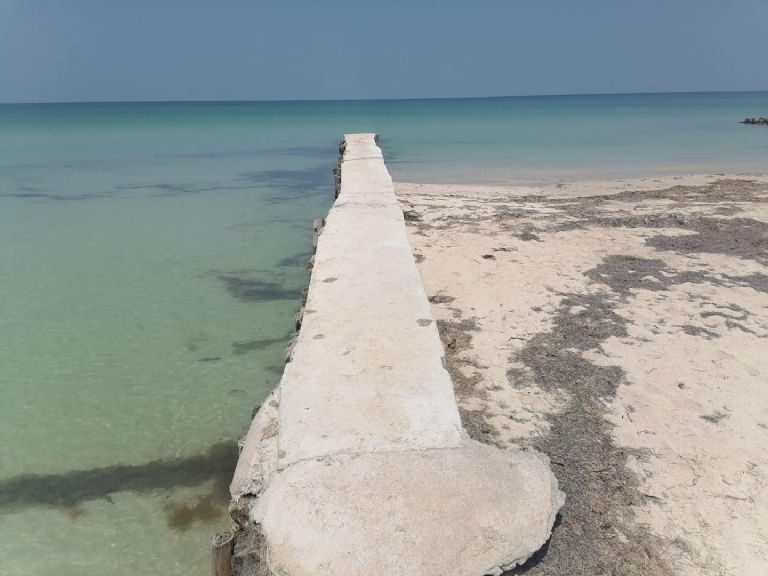After things took a turn for the worse in March in Chelem, the complaint of several residents of the coastal area against foreign propuerty owners for the breakwater structures that were recently built along the coast.
The people of Chelem claim that it is necessary to remove the concrete pier that can be seen at one of the entrances and that was built by a foreigner, whose identity and country of origin are unknown to date.
The photographs have gone viral through social networks and have sparked controversy, since the manufacture of these structures is not a new issue in places like Chuburná, Chelem, Yucalpeten, Chicxulub, Uaymitun, San Bruno, Telchac, San Crisanto, Chabihau, etc., as several illegal breakwaters can be seen along the coastal area.

In Chuburná there is a Nautical Committee, which through tours usually locates these types of situations and refers them to federal regulatory agencies, such as Profepa and Semarnat.
The area of greatest erosion is between the eastern end of Progreso and Chicxulub Puerto, despite the fact that there have been several government initiatives to stop this problem.
It stands out that outside of the issue of erosion, situations have also arisen outside the scope of nature, exclusively in the port of Chelem, where differences between locals and a resident of Russian origin have been reported.
The issue related to breakwaters and sand removal is not new in this port, as federal and state authorities have carried out initiatives to eradicate this problem.
In 2018, in order to recover beaches, 19 geotubes were placed at the eastern end of the city to obtain up to 650 meters of beach in the site known as El Jacalón; with an investment of 1.5 million pesos made by 24 residents of the area.
According to Chelem resident Paúl Recio, the results were not favorable, on the contrary to what was expected, the problem of erosion has increased and needs to be resolved before the beach disapperas, as he assures that in two years, the space between the residential area and the sea has lost seven meters of sand.
Also in 2018, the Yucatán State Government invested 50 million pesos in the rehabilitation of beaches from Yucalpetén to Chelem in a strip of 7.4 kilometers to recover up to 25 meters of beach.

The following year, it was notable that in the month of August there were sand transfer works, also known as bypass, in the ports of Chuburná and Telchac, which also sought to recover the beaches, as well as to stop and reverse the erosion of these coastal areas.
This process consisted of the placement of infrastructure for the transfer of sand that encourages its natural passage in order to recover beach space. At the same time, these works allowed several seafarers to have a safe place to shelter their boats.
The year 2021 and its reopening for activity on the beach had as a precedent the removal of more than 270 illegal spurs on more than 40 kilometers of the coast that eroded the beaches and affected the owners of beach properties. The implementation was made through the Conservation and Comprehensive Management of Coastal Zones Program.
Prior to the work, with the support of specialists from the National Coastal Resilience Laboratory of the National Autonomous University of Mexico (UNAM), overflights and technical visits were carried out at various points on the Yucatecan coast, identifying, preliminarily, 272 illegal berakwater structures in an area that extends from Dzilam de Bravo to Sisal.
According to specialists, the problem of erosion needs to be addressed, as there are more than 70 species of plants that survive in the coastal dune of the Yucatan Peninsula, being the second place with the highest number of endemic species in the coastal flora of Mexico, second only to Baja California. Many of these species are now considered as endangered.
In addition, this type of vegetation provides shelter, food and protection to numerous species of insects, reptiles, birds and small mammals; and its most relevant function is to act as a barrier against winds and tides, as well as to stop tropical storms and hurricanes.
TYT Newsroom


